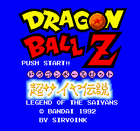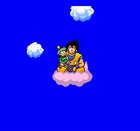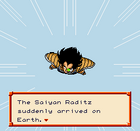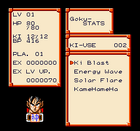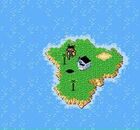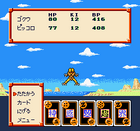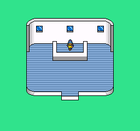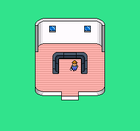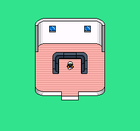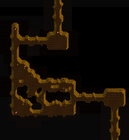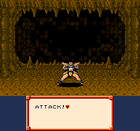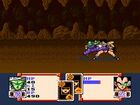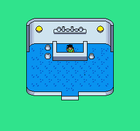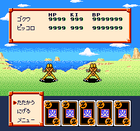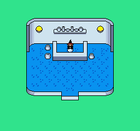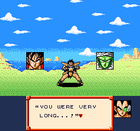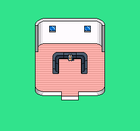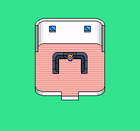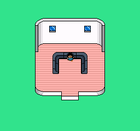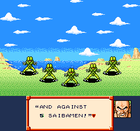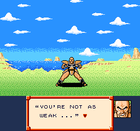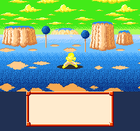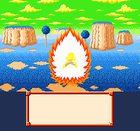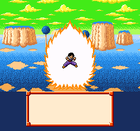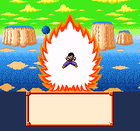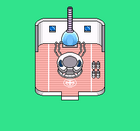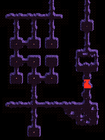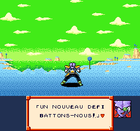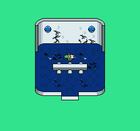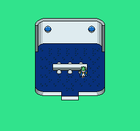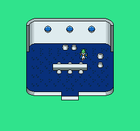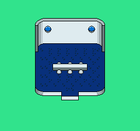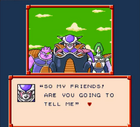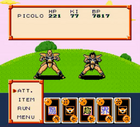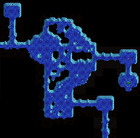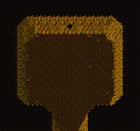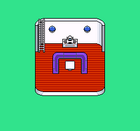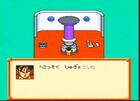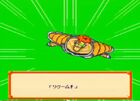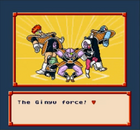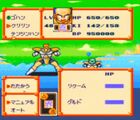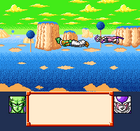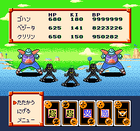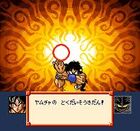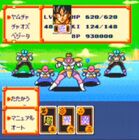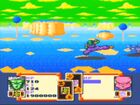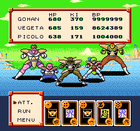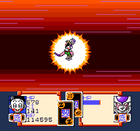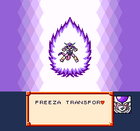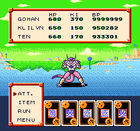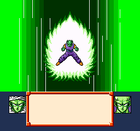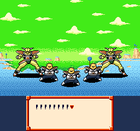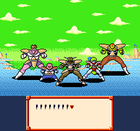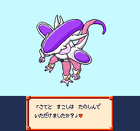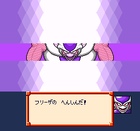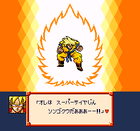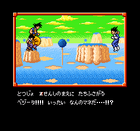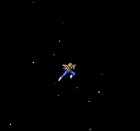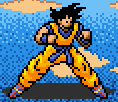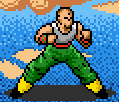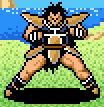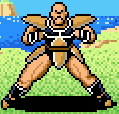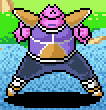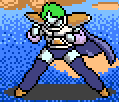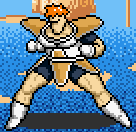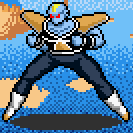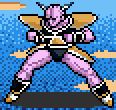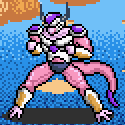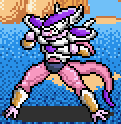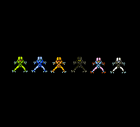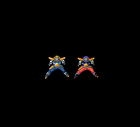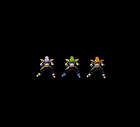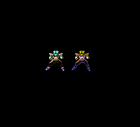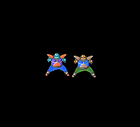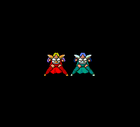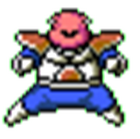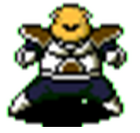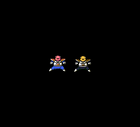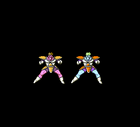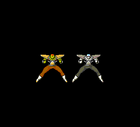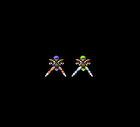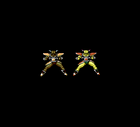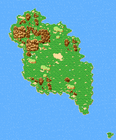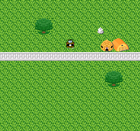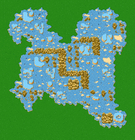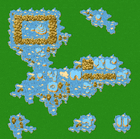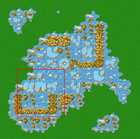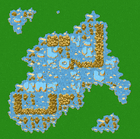No edit summary Tags: Visual edit apiedit |
m (超 is meant to be read as "Supaa", as indicated by the furigana on the box art.) Tag: sourceedit |
||
| Line 12: | Line 12: | ||
|input = SNES Controller |
|input = SNES Controller |
||
}} |
}} |
||
| − | '''''Dragon Ball Z: Super Saiya Densetsu''''' (ドラゴンボールZ 超サイヤ伝説, ''Doragon Bōru Zetto |
+ | '''''Dragon Ball Z: Super Saiya Densetsu''''' (ドラゴンボールZ 超サイヤ伝説, ''Doragon Bōru Zetto Supā Saiya Densetsu''; lit. "Dragon Ball Z: Legend of the Super Saiyan") is a role playing [[video game]] and the first ''[[Dragon Ball (franchise)|Dragon Ball]]'' game for the [[wikipedia:Super Nintendo|Super Famicom]]. It was released only in Japan on January 25, 1992. |
''Super Saiya Densetsu'' is a remake combining two earlier Famicom games of the [[Dragon Ball Z: Gokuden (series)|''Gokuden'' series]]: ''[[Dragon Ball Z: Kyōshū! Saiyan]]'' and ''[[Dragon Ball Z II: Gekishin Freeza]]'', but without the movie characters and anime [[filler]] elements that were featured in them. |
''Super Saiya Densetsu'' is a remake combining two earlier Famicom games of the [[Dragon Ball Z: Gokuden (series)|''Gokuden'' series]]: ''[[Dragon Ball Z: Kyōshū! Saiyan]]'' and ''[[Dragon Ball Z II: Gekishin Freeza]]'', but without the movie characters and anime [[filler]] elements that were featured in them. |
||
Revision as of 16:21, 22 November 2015
Dragon Ball Z: Super Saiya Densetsu (ドラゴンボールZ 超サイヤ伝説, Doragon Bōru Zetto Supā Saiya Densetsu; lit. "Dragon Ball Z: Legend of the Super Saiyan") is a role playing video game and the first Dragon Ball game for the Super Famicom. It was released only in Japan on January 25, 1992.
Super Saiya Densetsu is a remake combining two earlier Famicom games of the Gokuden series: Dragon Ball Z: Kyōshū! Saiyan and Dragon Ball Z II: Gekishin Freeza, but without the movie characters and anime filler elements that were featured in them.
Overview
The game follows the rough outline of the Vegeta, Namek, and Frieza Sagas, with various add-ons and edits to make the story fit within the RPG guidelines, such as the inclusion of multi-colored Saibamen and re-colors of Frieza's henchmen and the Ginyu Force members as common enemies.
Characters in the game
Playable characters consist of (in order): Goku, Piccolo, Gohan, Krillin, Yamcha, Tien Shinhan, Chiaotzu, Dende, two Namek Warriors (Maima and Tsumuri), Vegeta, Nail, and Captain Ginyu (through body exchange). By using Captain Ginyu, you can manage to take the body of any character, though this returns to normal at the end of a fight.
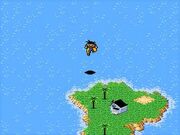
Gameplay
Enemies in the game include: Blue, Orange, Green, Black, Purple/Cyan, and Gray Saibamen. Once on Namek, there are two of Frieza's henchmen (Banan and Appule), who get two color edits as separate enemies. After they are defeated, Cui, Dodoria, Zarbon, and the Ginyu Force all get two re-colors as individual enemies that are roughly half as strong as their originals.
Bosses in the game include: Raditz (Black Saibaman double), Raditz, Green Saibaman and Nappa, King Kai, Vegeta, Cui (can be fought before encountering Frieza for the first time, or fought after collecting the cave Dragon Ball), Dodoria, and Zarbon in both forms. Guldo and Recoome fight as a pair as well as Jeice and Burter. Depending on which one you kill the other runs away and brings back Ginyu. Frieza is fought several times, first as a Black Saibaman clone. After defeating his 2nd form, he runs away protected by Ginyu Force Recolors. Frieza is randomly encountered in his 3rd form, and during his 4th form, he can "power up" to his maximum. If the player sacrifices an ally to make Goku become Super Saiyan, and keeps Goku alive for the fight, a Super Saiyan Vegeta encounters the group for a secret final battle after the end of the credit roll.
Bulma also joins the crew for most of the game, providing a place to rest while on Earth and Namek. Master Roshi only appears once to support the players against Raditz. Grand Elder Guru appears on Namek powering up all characters in the party. There are a few surviving Namekians who will talk to you and give you information. Also there are two fairies on Namek that allow you to collect a Dragon Ball and pass into Guru's domain.
Fighting System
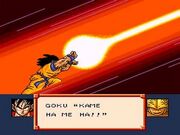
Goku firing a Kamehameha
The fighting system is based on a variety of symbols, numbers (represented by dots), and the card itself. The player has a total of 5 cards (5 attacks) for most situations, randomly generated. The player can use item cards like Oolong to re-exchange them, or King Yemma or Chi-Chi to max out a card's potential.
- Normal Attack Cards: White cards with a School Character (Turtle School, Demon, Kami, Alien). A character has a preference (Piccolo's preference is Demon) and that will initiate an "attack all."
- Strong Attack Cards: Yellow cards. Piccolo's preference switches to these after an optional super-fusion with Dende and Two Nameks.
- Ginyu Attack Cards: Black Cards with Ginyu Force symbol. Basically the same as Normal Attack Cards.
- Ki Attack Cards: Blue Cards. Each Ki Card uses one Ki Attack or Ability.
The number of stars on the top-left Dragon Ball references the attack power (one star being weakest, Z being strongest). There are eight ranks of strength.
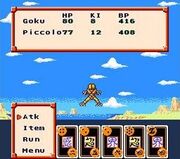
Gameplay
The character on the bottom-right Dragon Ball icon determines its defensive power. This also has eight ranks, with a single wavy line (representing one) being the weakest defense, and Z being the strongest. If two attacking characters of equal power attack enemies of equal power with cards of equal type and attack power, the enemy with a weak defense power will take more damage than one with a higher defense.
Attack speed is determined by the attack power of a card. Strongest attack power always goes first (unless Vegeta interrupts), followed, in descending order, by the next strongest cards. If, however, two or more cards have the same attack power in a single turn, attack speed is then based on defense power. (Goku, Piccolo, and Tien use Z-Attack cards, but Tien has Z-Defense, while Goku and Piccolo have lower defense, so Tien goes first). If, though, the attack and defense of a card are BOTH equal amongst two or more people, the character's Power Level is used to determine attack speed.
Stores and Items
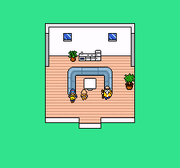
At Kame House
There are two major stores in the game. One is Baba's house, easily noticed as being dark gray with bricks. Fortuneteller Baba will buy/sell item cards to a player in exchange for zeni. Baba's store is replaced by a Namekian salesman when the story advances to Namek.
The other place is a training center. Players can improve the Ki number of the character by powering up and destroying a rock. Also at the training center, the player can fight waves of enemies for zeni, though by doing this they do not receive experience.
Story related items do not have a zeni cost beside their picture. Story items include Dragon Balls and the Dragon Radar, as well as cards such as Enraged Gohan, the Moon, and Vegeta.
The basic cards heal HP and Ki. Other cards can change combat cards, and improve the power of the character by 25% or even 50%. The Grandpa Gohan card is unique, as it stuns an opponent for several turns. Scouters can be purchased or won in battle as well, and depending on its strength can show how strong an opponent is numerically.
Characters
Playable characters
- Goku (Base, Super Saiyan)
- Gohan (Base, Great Ape)
- Piccolo
- Krillin
- Yamcha
- Tien Shinhan
- Chiaotzu
- Vegeta
- Nail
- Maima
- Tsumuri
- Dende
Bosses
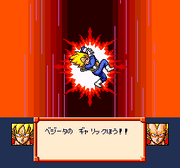
Super Saiyan Vegeta charging a Galick Gun
- Fake Raditz (偽ラディッツ)
- Raditz
- Piccolo
- King Kai
- Nappa & Green Saibaman
- Vegeta (Base, Great Ape)
- Maima & Tsumuri (optional)
- Cui
- Dodoria
- Nail's Clone
- Zarbon (Base, transformed)
- Raditz & Nappa
- Guldo & Recoome
- Jeice & Burter
- Captain Ginyu with either Jeice or Burter
- Fake Frieza (偽フリーザ)
- Frieza (1st Form, 2nd Form, 3rd Form, Final Form, 100% Power)
- Super Saiyan Vegeta (secret boss)
Enemies
- Caiwareman (カイワレマン) – Blue Saibaman; called "J.SAI" in the English version.
- Kyuukonman (キュウコンマン) – Brown Saibaman; called "SAIBAI" in the English version.
- Saibaiman (サイバイマン) – Green Saibaman, same as those in anime; called "SAIMEN" in the English version.
- Kopīman (コピーマン) – Black Saibaman that can transform into one of the heroes; called "IMITE" in the English version.
- Tennenman (テンネンマン) – Blue-purple Saibaman; called "BAIMEN" in the English version.
- Jinkouman (ジンコウマン) – Gray Saibaman; called "GRIMEN" in the English version.
- Appule (アプール) – Called "Slug" or "Neboto" in English versions.
- Ramon (ラモン) – A green version of Appule; called "Vug" or "Muno" in English versions.
- Orlen (オーレン) – Called "Bugy" or "Shuku" in English versions.
- Banan (バナン) – Called "Bun" in the English version.
- Beach (ビーチ, Bīchi) – A green haired version of Banan; named "Bud" or "Cuel" in English versions.
- Grep (グレップ, Gureppu) – A purple haired version of Banan; named "Bund" or "Regne" in English versions.
- Gorin (ゴリン) – A teal version of Cui; called "Cid" or "Grig" in English versions.
- Strob (ストロブ, Sutorobu) – A green version of Cui; called "Zoak" or "Nezio" in English versions.
- Gorman (ゴーマン, Gōman) – A teal version of Dodoria; called "Dren" or "Jaklu" in English versions.
- Aprico (アプリコ, Apuriko) – A golden version of Dodoria; called "Bobo" or "Ghoko" in English versions.
- Aboga (アボガ) – A blond version of the transformed Zarbon; called "Red" or "Fepha" in English versions.
- Mandarin (マンダリン) – A blue haired version of the transformed Zarbon; called "G.BLY" in the English version.
- Zella (ゼラ, Zera) – A pink version of Guldo; called "Droit" or "LU" in English versions.
- Purin (プーリン, Pūrin) – A yellow version of Guldo; called "Hirra" in English version.
- Earth (アース, Āsu) – A pink version of Recoome; called "Recoom" in English version.
- Zofuto (ゾフト) – A teal version of Recoome; called "Snuel" in the English version.
- Marigan (マーリガン, Mārigan) – A green version of Burter; called "F.VER" or "Perro" in English versions.
- Jean (ジャン, Jan) – A gray version of Burter; called "Sasho" in the English version.
- Banira (バニーラ, Banīra) – A green haired version of Jeice; called "Kibbi" in the English version.
- Moose (ムース, Mūsu) – A blue haired version of Jeice; called "Checo" in the English version.
- Miruga (ミルガ) – A brown version of Captain Ginyu; called "GUR" or "Nanoy" in English versions.
- Rakuto (ラクト) – A golden version of Captain Ginyu; called "Mekrol" in the English version.
Other characters
- Master Roshi
- Bulma
- Farmers
- Human Shopkeeper
- Fortuneteller Baba
- Puar – Gives a Puar card.
- Oolong – Gives a Namekian Frog card in exchange for a Launch card.
- Yajirobe – Gives a Yajirobe card in exchange for a Namekian Frog card. Can be summoned with the Yajirobe card during battles. Yajirobe cards are proven very useful during the battle against Vegeta to revert him to his base form if he turns into a Great Ape.
- Fairy
- Namekians
- Namekian Shopkeeper
- Cargo (Called Emih in the English version)
Chapters
- "Earth Assault! Raditz!" – Goal: defeat Raditz. Enemies: Kaiwaremen, Kyuukonmen.
- "Earth - Gohan's training" – Goal: defeat Piccolo.
- "King Kai's planet - Goku's training" – Goal: Clear the training.
- "Earth - Vegeta attacks" – Goal: defeat Vegeta. Enemies: Kaiwaremen, Kyuukonmen, Saibamen.
- "Planet Namek - Frieza appears" – Objectives: rescue Dende from Frieza, find Cargo, get the Two-Star Dragon Ball from Maima and Tsumuri, get the Six-Star Dragon Ball from the cave, defeat Cui, defeat Dodoria. Enemies: Banan, Appule, Ramon, Saibamen, Kopīmen.
- "Earth - Goku's training" – Objective: Clear five gravity trainings.
- "King Kai's planet - Piccolo's training" – Goal: Clear the training.
- "Planet Namek - The original Elder" – Objectives: meet Grand Elder Guru, defeat Zarbon. Enemies: Appule, Ramon, Beach, Grep, Gorin, Gorman, Tennenmen.
- "Earth - Goku's training" – Objective: Clear five gravity trainings.
- "Planet Namek - Showdown! The Ginyu Special Squadron!" – Objectives: defeat the Ginyu Force, retrieve the Dragon Balls. Enemies: Orlen, Beach, Gorin, Strob, Gorman, Aprico, Aboga.
- "Planet Namek - Nail vs. Frieza" – Objective: Control Nail and battle Frieza.
- "Planet Namek - Freeza the Planet Destroyer" – Objectives: find Frieza, fuse Piccolo and Nail, fight until Frieza's transformation. Enemies: Appule, Beach, Gorin, Strob, Aprico, Aboga, Mandarin, Zella, Earth, Marigan.
- "Planet Namek - Battle Freeza" – Goal: defeat Frieza. Enemies: Gorin, Aprico, Zella, Earth, Zofuto, Moose, Jean, Miruga, Rakuto.
- "Super Vegeta" – Bonus chapter unlocked if Goku turns into a Super Saiyan during the battle against Frieza and if Vegeta did not die.
Trivia
- When a Saiyan reaches less than 5 HP, using a full heal item on him (like a card of Kami) will result in him receiving a Zenkai and raise his level by 1. This can be used early on against Raditz, to boost Goku's level extremely high.
- There is a glitch related to the Zenkai: if a player chooses to level Dende to level 3 (9999 exp earned twice), Dende can heal a character as well. Should he heal a Saiyan that is at 5 HP or below, the Saiyan receives the Zenkai, but not the level up. This allows certain characters such as Gohan or Vegeta to be boosted to higher-than-usual power levels. Using the Moon Card on Gohan, however, restores his power level to the level it should be.
- If the above glitch is used, and the Moon Card is used on Gohan while using a Kaio or Guru card, Gohan's power level will read either gibberish, or fall down to a ridiculous low power level of 4-5 digits. This is a permanent state, so if this happens during the Frieza or SSJ Vegeta battles, Gohan is rendered useless.
- Black Saibamen have an ability to copy a player's character. This is accompanied by an extreme power boost. Black Saibamen also copy Raditz if the player decides to go directly after Raditz and into the cave, as well as copy Frieza. Both fights are tough, but the following fight proves to be much tougher.
- Based on Goku's performance on King Kai's planet, he can return before, during, or after the battle with Nappa. Goku can return before the battle with Nappa if Piccolo kills Raditz with any attack other than the Makankosappo (Goku takes damage from these attacks, but you can still heal him at the beginning of each turn) and if Goku never messes up on King Kai's.
- Yamcha, Chiaotzu, and Tien (or any Z Fighters other than Piccolo) do not have to die against Nappa if Goku instantly returns as the best outcome. If they do not die, they accompany Gohan to Namek. They also receive the Guru power-up if they reach Guru. If they all die, they return with Piccolo to Namek at the end of the game.
- Even though under a player's control, Vegeta will still constantly ignore commands and attack out of turn. However, as an advantage, he will pursue any fleeing opponent and kill them. Vegeta can also be given low speed cards and attack first. Also, he may randomly use another attack or even a ki attack (even ki attacks that cannot be selected while controlling Vegeta, like the Final Crash).
- Captain Ginyu can perform the Body Change. If this happens, the only way to get Goku's body back is to perform another switch before Vegeta randomly kills Goku's body. As Ginyu, the player can exchange forms with any enemy, including Frieza. This effect only lasts until the end of the fight.
- Though the game has power levels included in it, it still remains level and stats based. Even opponents later on can still manage to damage characters, despite the huge power level difference.
- If you can keep Frieza busy long enough with Nail, you can get an extra wish from Porunga.
Gallery
Screeshots
Bulma in her Capsule House |
Characters
Cards
Maps
External links
- Dragon Ball Z: Legend of the Super Saiyan at rpgclassics.com (English)
- Dragon Ball Z: Legend of the Super Saiyan at lucifer.s14.xrea.com (Japanese)

